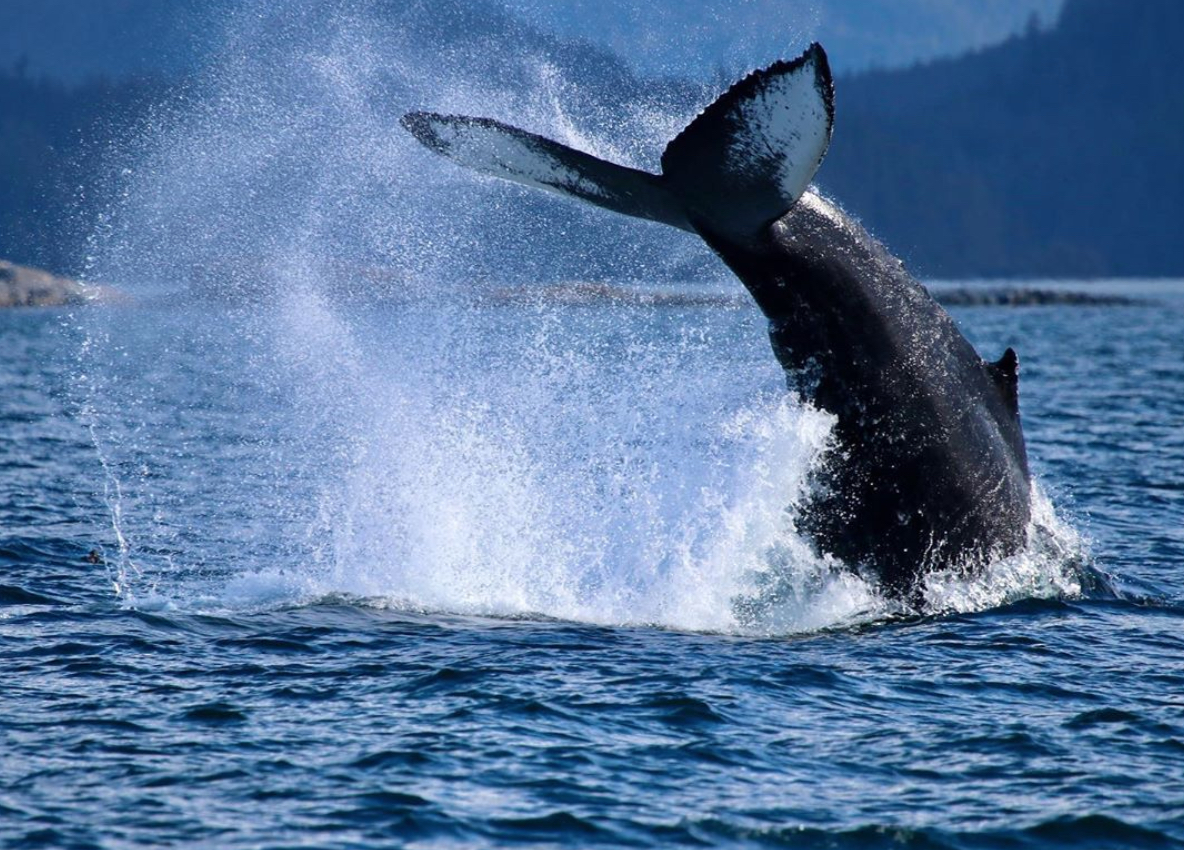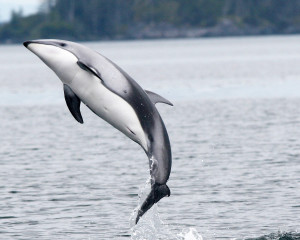Current Projects
Ocean Noise
Sound is as important to many marine species as vision is to humans. Sound travels farther and faster in water than in air, whereas vision is only useful to whales at ranges of a few body lengths at most. Our acoustic ecology work addresses two aspects: the role of sound in the ecology and predator-prey interactions of marine wildlife; and the extent to which human-made noise disrupts those processes. In addition to doing original research on this topic, we are actively working at the science-policy interface to ensure that ocean noise is well incorporated in real-world conservation and management plans. Ocean noise was one of the topics of Rob’s 2009-10 appointment as Canada-US Fulbright Chair at University of Washington; his 2010-2012 Marie Curie fellowship CONCEAL (Chronic ocean noise: cetacean ecology and acoustic habitat loss) at University of St Andrews; and his 2015-2018 Pew Fellowship in Marine Conservation.
We have enjoyed participating in terrific projects by graduate students and visiting scientists on responses of fish to underwater noise, and a positive use of anthropogenic noise to keep Dall’s porpoise out of harm’s way.
Dolphins
Erin has led a noninvasive study on Pacific white-sided dolphins (Lagenorhynchus obliquidens) in the Pacific Northwest (especially the Broughton Archipelago, British Columbia, Canada) since 2007. Picking up on our colleague, Alexandra Morton’s earlier work, Erin has compiled a long-term photo-identification catalogue (with support from SeaDoc Society and Raincoast Research) to provide more precise estimates of abundance and survival rate. This research formed the basis of her PhD at the University of St Andrews, and is revealing new insights into this poorly studied species’ social life, acoustics, population health, and the role of mammal-eating (Bigg’s or transient) killer whale predation on Pacific white-sided dolphin population dynamics. We partnered with Dr Stephen Raverty on a non-invasive health assessment by sampling pathogens in exhaled breath.
Rapid Assessment Toolkit
Knowing how many animals are in an area, and how they are distributed, is a central task in conservation science. This information is used to assess whether fisheries are catching more marine mammals in their fishing nets than the population can withstand, to guide spatial plans for protecting critical habitat, or assessing risk of human activities, such as windfarm construction or shipping lanes. The problem is that ship time is expensive. We partnered with Dr Randall Reeves (Okapi Wildlife Associates and IUCN Cetacean Specialist Group) and Dr Jeff Moore (NOAA Fisheries’ Southwest Science Center) to build a small-boat survey toolkit as a lower-cost way to estimate marine mammal abundance in regions where funding is scarce but fisheries bycatch is thought to be high. We are grateful to Synchronicity Earth for being the project’s first funder, and the US Marine Mammal Commission for allowing us to expand this work. We are grateful to the developers of several free software packages to allow us to do this work: Distance (the industry-standard software for line transect surveys); MARK (a powerful tool for mark-recapture statistical analysis of photo-ID data); CyberTracker (for field data collection) and Quantum GIS (for mapping our study area effort and sightings data).
Marine Protected Areas
We believe that marine protected areas (MPAs) are powerful tools to separate marine species from harmful human activities. Much of our work on killer whales has taken place near Robson Bight-Michael Bigg Ecological Reserve, off northeastern Vancouver Island, where northern resident killer whales rub their bodies on smooth gravel beaches. We have led research that identifies the need for a similar reserve for critically endangered southern resident killer whales, built around the whales’ preferred hunting grounds. As our team has grown, we have collaborated with scientists and managers on methods to protect important marine mammal habitats at a global scale. For more information on this fascinating topic, please learn more about the first three International Conferences on Marine Mammal Protected Areas.
Impact of human activities including bycatch
Bycatch in fisheries is arguably the biggest source of human-caused mortality to small cetaceans (whales, dolphins and porpoises). Locally, we worked with Drs Anna Hall and Arliss Winship to gauge, roughly, how many harbour and Dall’s porpoise and Pacific white-sided dolphins are being caught in salmon gillnet fisheries. We also like to work on solutions. We recently partnered with New England Aquarium to examine the effectiveness of “pingers” to help Dall’s porpoise identify the presence of fishing nets, so they can avoid entanglement.
Biodiversity conservation and priority-setting
As part of Erin’s PhD thesis, she conducted a population viability analysis (PVA) to predict how our understanding of Pacific white-sided dolphin population trends is influenced by our uncertainty in various aspects of the dolphins’ lives. She found that human activities (injuries from fishing gear or boat propellers) were far less likely to cause population declines than an increase in predation by killer whales. She also found that our ability to predict whether the population will increase or decrease hinges entirely on improving our estimates of the survival rates of adult females. This is a problem, because currently, we can only tell if a dolphin is female if she is photographed with a young calf. We are working on non-invasive technological methods (e.g., measuring fin shape with photographs and laser pointers) to tell adult males and females apart. We are also strengthening our sightings network and field efforts to understand the true rates of killer whale predation on these dolphins. This exercise taught us the power of free software Vortex, developed by our colleague, Dr Bob Lacy, at Chicago Zoological Society. Our upcoming work will include PVA analyses for southern resident killer whales, St Lawrence belugas, and oceanic dolphins of the northeastern Pacific.



